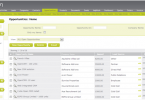Instead of a human manually executing the suite by following step-by-step instructions, automation testing employs an automation tool to execute the test case. As a result, the primary purpose of automation testing services is to reduce the number of test cases that must be executed manually rather than to completely eliminate manual testing.

Automation testing is pursued not only in the hopes of a higher return on investment but also because it expands the test coverage area and eliminates human interference and errors. According to a recent analysis from The Daily Research Chronicle, automated testing is expected to increase by 100 percent among big IT MNCs from 2019 to 2025.
In 2019, the market scale for automation testing was above USD 14 billion, with a growth projected of over 15% between 2020 and 2026 at the CAGR. Due to the reduction of time of use and increased effectiveness of the software testing services, automation testing services are more popular among companies.
The testing tools and platforms automate GUI, login, and database adjustments for saving expenses, increasing their market potential. In addition, the competitors on the market are more likely to include innovative techniques of testing, including Agile and DevOps.
In 2019, the sector of mobile endpoint interface accounted for around 25% of the market share of automated testing and would attain over 15% CACR by 2026. The growing interest of consumers to be digitalized would boost demand from the sector, such as online banking, online education, telemedicine, and online shopping. Mobile apps are quite dynamic for these digital services, as products and services are continually upgraded and require ongoing testing and application development.
Why is automation testing preferred by businesses?
Test automation may provide numerous advantages to your healthcare mobile app development test cycles so that better apps can be developed with less work. It also takes less time! Many organizations simply perform manual tests since their application development is not able to incorporate automation tests correctly.
Keep reading to learn the best advantages of automated testing! Automated testing means that a machine accomplishes what a person has done, faster, with fewer errors, 24/24. Sounds familiar? Is it familiar?
The growing e-commerce industry will give firms with automated testing a market opportunity to guarantee high integrity and application functioning. In April 2020 e-commerce sales amounted to USD 25.6 billion, with an increase of 8% compared to the previous year, the United Nations Conference on Trade and Development news release said. This has encouraged numerous businesses on the market to increase their profile in mobile testing, thereby attaining significant industry competitiveness
All monotonous and uninteresting activities were taken over by machines. Human beings tend to easily lose attention or ignore things not right with this type of employment. In this, machines are quicker and more dependable.
An evident significant initial expenditure is also made when changes are introduced, particularly this type of change. In general, smaller firms fear that returns will not be as promised or that an ROI will exist.
What are the benefits of automation testing?
We have shown that companies with 50% or more automated tests have shorter testing cycles (88%), greater test coverage (71%), and the ability to detect issues early (68 percent). Without compromising quality this implies quicker marketing time.
Other great advantages include enhanced test efficiency and the QA team’s morality. When we are productive and can provide outstanding things, the job is pleasant and meaningful. When we adore others. Take a look at the top ten advantages of automation testing.
1. Improved Results
Because automation testing saves so much time, especially when dealing with complex and massive systems. This enables testing to be repeated, resulting in better and faster results with substantially less work and time invested.
- Bug reports are the most frequently utilized test documents for organizations — 79% of customers report utilizing them in 2019.
- Seventy-six percent of the software-testers utilized the most prevalent test management tool software-tester to monitor bug tools such as Jira Bugzilla or Redmine in 2019. The second most commonly utilized tool was 59 percent agile workflow.
- Testers and developers have discovered the most common production fault in distributing untested or faulty code at more than 60%. A deleted database of around 10% was the second most prevalent issue.
2. A more rapid feedback system
During the validation phase of any software project, automation testing is critical. It substantially improves communication between developers, designers, and product merchants, as well as providing space for any bugs to be fixed quickly, boosting the development team’s efficiency.
3. Brand enhancement
The quality of the test data employed is always a factor in the effectiveness of testing. Because developing relevant and high-quality test data takes a long time, testing is frequently done on replicas of live databases. You may reuse your data over and over with automation solutions. This saves a lot of money in terms of project management and maintenance.
The best thing about automated testing is that it benefits all of the stakeholders involved. Automated testing systems not only improve the functionality of the system but also open the path for digital innovation and revolution.
4. Affordability
Even though automation testing requires a greater initial expenditure, it saves the organization a significant amount of money in the long run. It’s primarily due to a decrease in the amount of time it takes to conduct the tests. It also adds to a far higher level of work quality because there are no dangers of human error or negligence.
5. Evaluation of Efficiency
One of the most important aspects of the application development cycle is testing. The most appealing aspect of automation testing is that it can be left unattended for long periods of time. This allows for a lot of monitoring of the findings near the end of the process.
- Pros: the measuring unit cover is rough to see how effectively a software codebase has been tested. Pros:
- Cons: Unit testing is a single unit test. All the systems of an automobile might operate quite well, yet the car won’t start. The integration and acceptability tests in software too are vital for ensuring that the program is functioning, without taking care of this testing unit coverage. In addition, the unit test measures just the code that is uploaded to memory in most programming languages. In many situations, a significant amount of the code is not loaded into the memory, so that 100% may not be the actual codebase.
6. Coverage Area Increase
More tests can be assigned to any application through the usage of automated testing. As a result, there is more testing coverage and fewer software oddities. It also makes room for more complicated apps and features to be tested.
An increase in consumer spending and lifestyle in Malaysia, China, and India will increase the prospects for market expansion. The existence of a number of e-commerce businesses in the region, including Amazon, Alibaba, etc., will increase demand for web testing and application services. In China, Alibaba earned almost USD 768 billion in yearly sales, up by 28 percent in 2018 for the retail sector.
7. Detailed analysis
All testers tend to have various methods in terms of exposure and level of experience with different fields of concentration. With automation, all areas of testing are focused equally, and hence the greatest potential quality of the final product is ensured, with increased attention on each component of the product.
8. Reusability
Due to the nature of its test automation instances, test automation is repetitive in nature. It provides software developers with a chance to evaluate the reaction of the application as well as an easy configuration.
9. Previous defect detection
Automation testing records software deficiencies and hence simplifies the testing teams substantially. This also simplifies the joint consideration of the problems and a faster output for the development and support team. The total project development pace is enhanced and the proper functioning is guaranteed throughout the essential regions.
10. Market time
Test automation contributes considerably to the reduction of application time-to-market. Automation testing enables regular and constant test cases to be executed. The execution of a test library is highly rapid and takes more time after post automation.
Conclusion
With the above criteria, it can be clearly demonstrated that automated testing results in a considerable decrease in costs and time, together with the correct utilization of manual efforts. It opens the path for rapid feedback and thereby maximizes profitability.
This will eventually resolve the problems the company has and assist to increase industry standards. The necessity of quality assurance must be recognized by company executives and eventually become a key business strategy. The requirement for quality assurance and the benefits of testing automation must be adequately taught and articulated.
Essentially, automated testing will save costs, time, and effort, speed feedback, consistency, and faster results, thereby contributing directly to gains in productivity and maximizing profits.





Leave a Comment